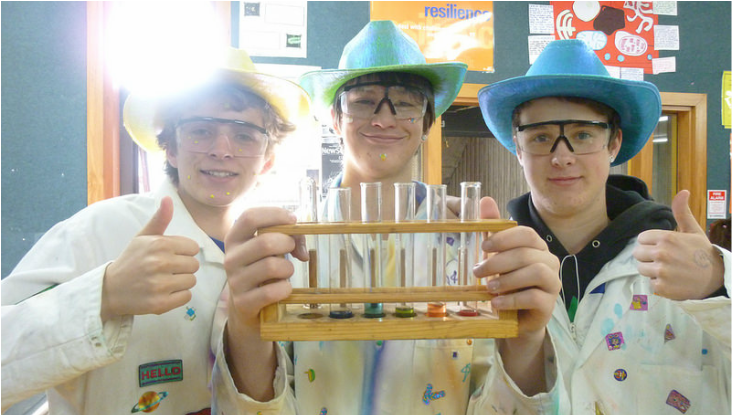We’ve had a number of students preparing for the SAT Subject Test Chemistry recently and thought we would share our complete methodology for how to prepare for this grueling exam. If some of your chosen universities require you to take this exam and you’re not sure what it is, check out this post that explains the SAT Subject Tests.
As you probably realize after doing some research on the test, this exam tests everything you should have learned in 1 year of high school chemistry. For most 12th graders, that means it tests you on a subject you took 2 years ago and then probably forgot about. There’s not a lot of overlap between chemistry and biology or chemistry and physics, so if you’re in one of these other subjects, you need a complete refresher.
For most of our students, we have to offer a 30-hour course (that’s a lot of prep for an hour-long exam!) for them to sufficiently master the subject matter. In order to reduce the amount of one-on-one instruction you need, you’ll have to start the prep on your own and reserve hours with your tutor for questions.
Here’s how we get students started on the SAT Subject Test Chemistry and, if you’re prepping on your own, we recommend you go about your preparation:
Your SAT Subject Test Chemistry Strategy Notes
Download our complete strategy notes for your SAT Subject Chemistry Test prep as a PDF file. Print this periodic table as well (you should have it out as you study and work questions).
Apply Me SAT Subject Test Chemistry Strategy Notes
Everything is taken from the Sparknotes Chemistry Guide. Here’s how to use these:
- Print the PowerPoint or use the PDF editor on your tablet to take digital notes on the notes.
- Read a chapter of the book and follow along in the notes.
- Try to do the examples in the notes without using the Sparknotes book.
- Check yourself with the Sparknotes book.
- Complete the review exercises at the end of the Sparknotes chapter. Time yourself, giving 1 minute per question (e.g., if there are 10 questions, you get 10 minutes). At the end of the time, mark where you stopped and keep working. Be faster next time.
- As you review at the beginning of your next session, review only the PowerPoint notes.
SAT Subject Test Chemistry Practice Tests
You MUST take practice tests if you intend to score over 600 (this is a good score on the subject tests), so you’ll need supplemental material. We recommend you use the Kaplan SAT Subject Test Chemistry book. It’s also a great resource if you need more help on a certain subject. You can buy the Kaplan book at Book World by Kinokuniya in Dubai Mall. If the book isn’t available, you can buy Barron’s SAT Subject Test Chemistry instead.
Take a diagnostic test BEFORE you start preparing. This score is your baseline score and lets you know what you would get if you took the SAT Subject Chemistry Test now. You’ll need to write down and try to improve upon this score.
Your Study Schedule
Since you probably have a lot of school work, we recommend you reserve one day a week to study for the SAT Subject Chemistry Test. Each session will take about 4 hours (practice tests only require 1 hour). Here’s the schedule to prepare over 8 weeks. If you have less time, you’ll have to do 2 days a week.
- Chemistry Basics (this represents chapters 1, 2, 3, 12, and 13 from the Sparknotes)
- The Structure of Matter
- The States of Matter
- Reaction Types; Practice Test #1
- Stoichiometry and Equilibrium and Reaction Rates
- Thermodynamics and Descriptive Chemistry; Practice Test #2
- Laboratory and Review (there are no strategy notes for this topic, review from Sparknotes); Practice Test #3
- Review notes; Practice Test #4
Our Expert Advice
- You don’t have to know everything to do well on this exam. Concentrate your studying on the topics in weeks 1 to 4 because these concepts will allow you to answer a bulk of the questions.
- You won’t be able to answer every question on the exam. You have 60 minutes to answer 85 questions. Some of them require calculations and some of them require a lot of thinking. It’s fine to leave questions blank.
- In order to decide what to leave blank, do the test in two passes. On your first pass, complete everything you know. Circle questions you skip in the answer book. Bubble in the ones you complete on the answer sheet after you finish each page.
- Estimate on questions that require calculations rather than trying to find exact answers. You don’t get a calculator on the test and the calculations aren’t super-involved. (The notes are set up to test concepts, not approximations, so you can use a calculator on the notes if you need to.)
- Study regularly for the best results. Cramming won’t allow you to master the subject matter or be able to apply it well.
That’s everything you need! If you like what we’ve provided and found it helpful, please leave us a comment below.






